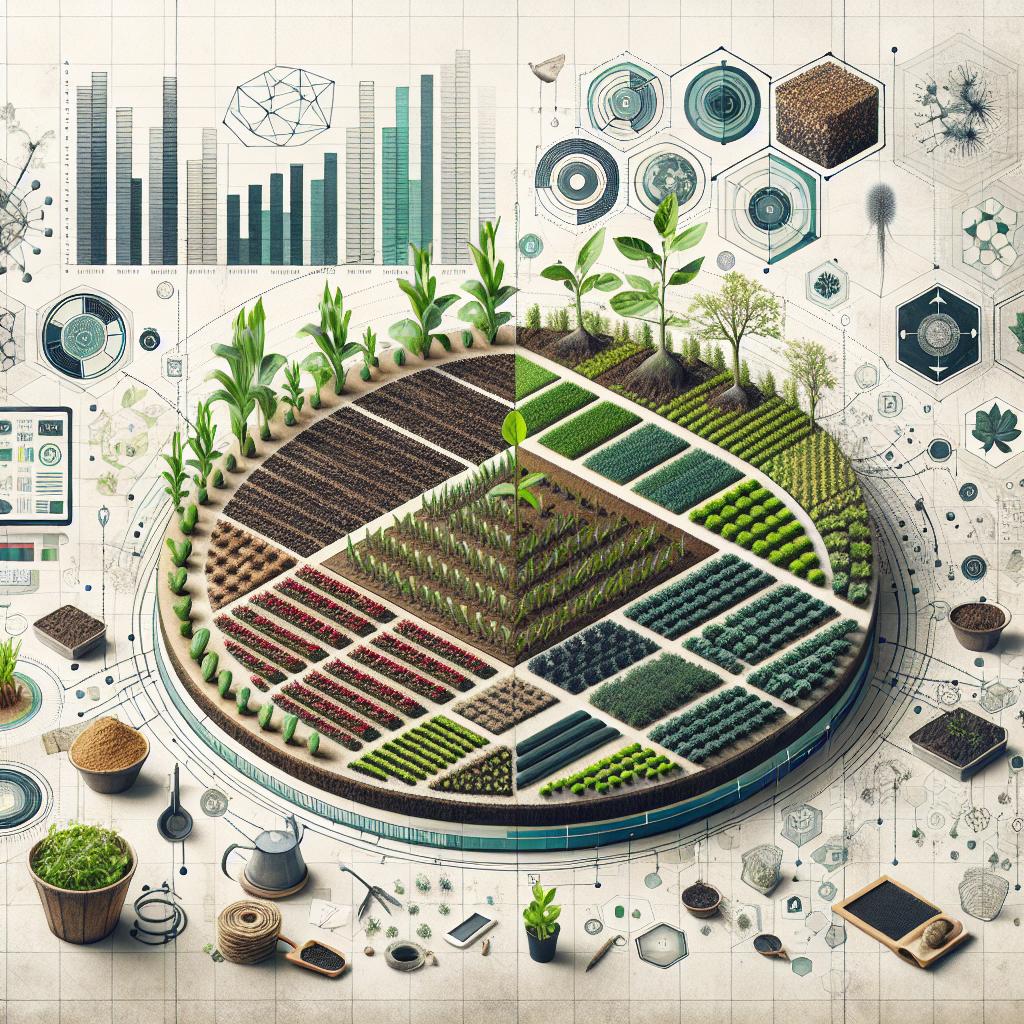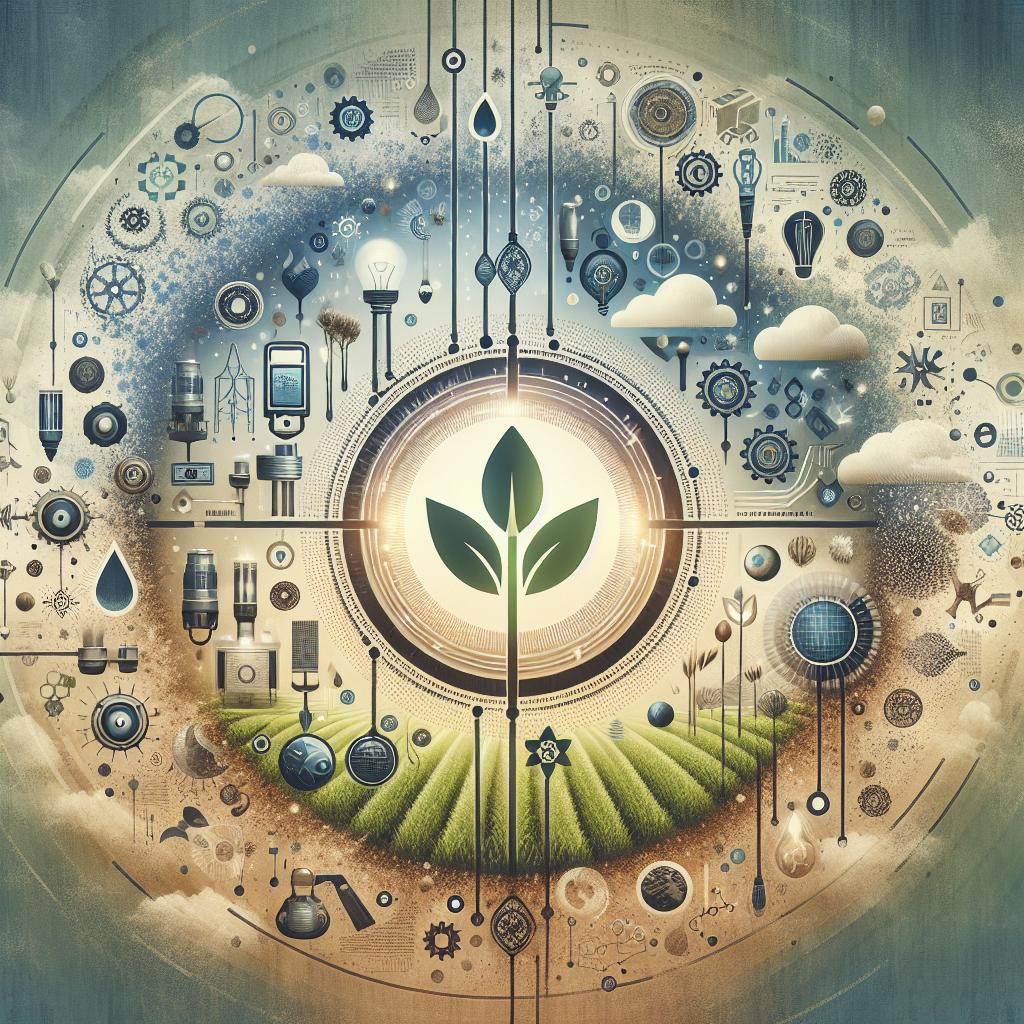This post may contain affiliate links which means I may receive a commission for purchases made through links. Learn more on my Private Policy page.
Unlocking the Secrets to Sustainable Gardens: Key Considerations for Designing an Efficient Irrigation System Layout
Imagine stepping into a lush garden, where every flower blooms with vibrancy and every vegetable thrives under the gentle caress of well-timed water. A thriving garden isn’t just a product of luck; it requires a thoughtful approach—especially when it comes to irrigation. As we shift toward more sustainable gardening practices, the importance of an efficient irrigation system layout becomes increasingly clear. Whether you’re nurturing a sprawling farm, a cozy backyard plot, or a collection of potted plants on your balcony, designing a smart irrigation system can make all the difference. In this article, we’ll explore the key considerations that will help you create a watering plan that not only conserves water but also enhances the health and productivity of your plants. Join us as we break down the essentials of irrigation design, ensuring that every drop counts!
Understanding Your Landscape: The Importance of Site Analysis
Before delving into the intricacies of irrigation design, it’s vital to grasp the unique characteristics of your landscape. Every site tells a story shaped by its topography, climate, and soil type. Understanding these elements can significantly affect how water is distributed throughout the area. Consider factors such as:
- Slope and Drainage: Does your area experience runoff? Adjust your system accordingly.
- Exposure: Areas with more sunlight may require different watering schedules compared to shaded regions.
- Soil Quality: Sandy soils drain quickly, while clay retains moisture; this impacts irrigation frequency.
Next, gather data on any existing vegetation or planned plantings to assess their moisture needs. This understanding will guide you in creating zones that cater specifically to their requirements. A well-structured irrigation system can be the difference between a flourishing garden and a struggling patch. Use the following table to help you categorize your flowering plants and their watering needs:
| Plant Type | Water Requirement | Ideal Irrigation Frequency |
|---|---|---|
| Succulents | Low | Every 2-4 weeks |
| Herbs | Moderate | Weekly |
| Flowering Annuals | High | Every 2-3 days |

Water Source Wisdom: Choosing the Right Supply for Your Needs
Choosing the right water source for your irrigation system is crucial to ensuring that your plants receive the appropriate amount of moisture while also conserving resources. Each type of water supply comes with its unique advantages and considerations. Groundwater, for instance, often provides a reliable supply, but requires careful management to prevent depletion. Surface water, such as rivers and lakes, can be abundant but may necessitate permits and adherence to environmental guidelines. Additionally, rainwater harvesting is a sustainable option that not only utilizes natural precipitation but also helps reduce your water bills.
When evaluating your options, consider the following factors that will influence your choice of water source:
- Quality: Ensure the water is free from contaminants that could harm your crops.
- Accessibility: The location of your water source relative to your fields can impact efficiency.
- Capacity: Determine if the source can meet your irrigation demands throughout the growing season.
- Sustainability: Factor in any ecological impacts that might arise from using a particular source.
By weighing these points, you can select a water supply that not only supports your plants but also aligns with long-term sustainability goals.

Strategic Plant Placement: Matching Crops with Zones for Optimal Growth
The placement of crops in the landscape can significantly dictate how effectively they thrive. By considering the unique characteristics of different zones—such as sunlight, soil type, and moisture levels—farmers can enhance their productivity. A few key aspects to keep in mind when choosing the right crops for specific areas include:
- Soil Composition: Certain plants flourish in sandy soils, while others thrive in clay-rich environments.
- Water Accessibility: Utilizing crops that are well-suited to the irrigation capabilities of the zone ensures efficient water use.
- Sun Exposure: Understanding the daily sunlight patterns can guide gardeners in selecting sun-loving or shade-tolerant species.
When determining which crops align best with various zones, farmers should also consider their local climate conditions beyond the basic parameters. Factors such as temperature fluctuations and seasonal precipitation patterns can further influence crop selection. A simple framework can assist in this decision-making process:
| Zone | Recommended Crops | Climate Considerations |
|---|---|---|
| Zone 1: Sandy Soil | Carrots, Onions | Well-drained; prefers moderate rainfall |
| Zone 2: Clay Soil | Peas, Beans | Retains moisture; best in cooler climates |
| Zone 3: Loamy Soil | Tomatoes, Lettuce | Favorable for diverse plant growth; warm weather |

Technology and Innovation: Enhancing Efficiency with Smart Irrigation Solutions
Incorporating smart irrigation solutions into your system layout can dramatically enhance efficiency and sustainability. By leveraging advanced technologies such as soil moisture sensors, weather data integration, and automated control systems, you can ensure that your irrigation processes are both responsive and resourceful. Some key benefits include:
- Water conservation: Reduce unnecessary water use by watering only when needed.
- Precision application: Target specific areas needing irrigation, minimizing waste.
- Data-driven decisions: Analyze performance and make informed adjustments based on real-time data.
When designing your layout, consider the topography and microclimates of your landscape. Utilizing an integrated approach enables optimal coverage and performance by dividing your area into distinct zones based on factors like plant type, soil characteristics, and sun exposure. A well-structured planning guide can help manage these aspects effectively; refer to the table below for a simple example of zone categorization:
| Zone Type | Considerations | Recommended Sensors |
|---|---|---|
| Sunny Areas | High evaporation rates | Soil moisture sensors |
| Shaded Areas | Low water demand | Temperature sensors |
| Sloped Areas | Runoff management | Rainfall sensors |
To Conclude
As we draw the curtains on our journey through the intricacies of designing an efficient irrigation system layout, let’s take a moment to reflect on the vibrant tapestry of life that water weaves into our gardens and fields. Remember, the essence of a thriving landscape lies not just in the quantity of water delivered, but in the thoughtful consideration of how it flows, reaches, and nurtures every corner of your green paradise.
Whether you’re a seasoned gardener or just embarking on your agricultural adventure, the key takeaways from our exploration will undoubtedly set the stage for a flourishing future. By embracing factors such as soil type, crop needs, and system efficiency, you’ll ensure that every drop serves its purpose—feeding not just your plants, but your spirit as well.
So, as you embark on the design of your irrigation system, keep creativity and innovation at the forefront. Let your garden be a canvas, painted with the strokes of knowledge and care. And remember, the rhythm of your irrigation system can mirror the ebb and flow of nature itself, creating harmony in both your landscape and your life.
Happy watering, and may your green spaces thrive like never before!
This post may contain affiliate links which means I may receive a commission for purchases made through links. Learn more on my Private Policy page.
